When you look at Vancouver as whole, it's easy to see that we're a city of extremes. From record breaking housing prices to an ongoing opioid crisis, the city is ripe with socio-economic tension that can't help but rear its head from underneath the shiny exterior of the "city of glass". This of course, is nothing new.
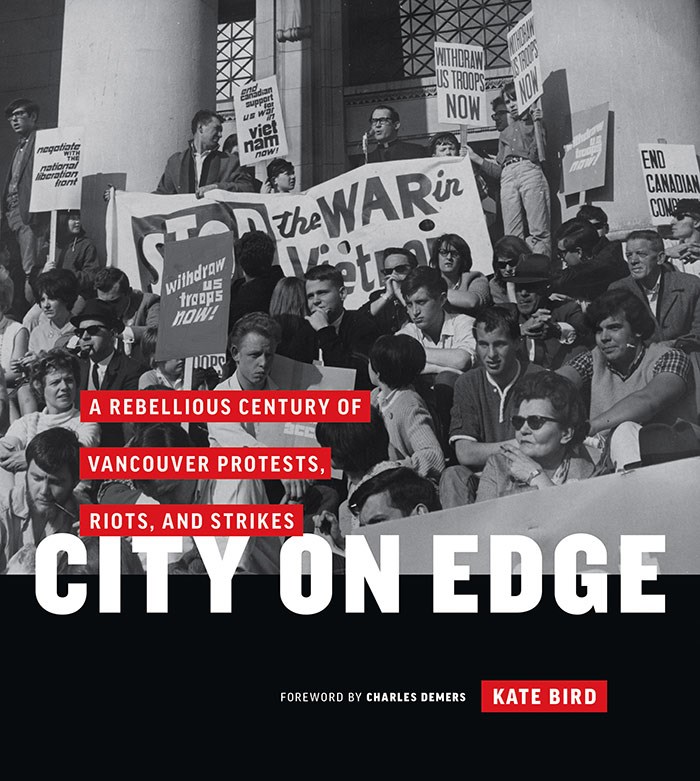 Over the past 100+ years Vancouver has seen its fair share of civil unrest, all of which has been documented in Kate Bird's new book, City on Edge: A Rebellious Century of Vancouver Protests, Riots, and Strikes.
Over the past 100+ years Vancouver has seen its fair share of civil unrest, all of which has been documented in Kate Bird's new book, City on Edge: A Rebellious Century of Vancouver Protests, Riots, and Strikes.
Alongside excellent coverage and insights regarding each event, the book includes stunning photographs from Vancouver's most important peace marches, protests, demonstrations and confrontations, showcasing just much protest culture is part of the city's identity.
Check out some highlights from the book below and learn more about the book HERE.
SS Komagata Maru, 1914
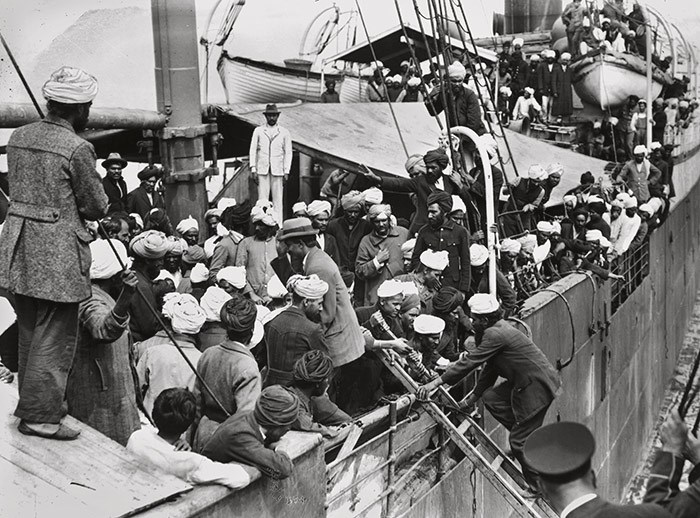 SS Komagata Maru, 1914. Photo: Leonard Frank/Vancouver Public Library.
SS Komagata Maru, 1914. Photo: Leonard Frank/Vancouver Public Library.
On May 23, 1914, the SS Komagata Maru arrived in Vancouver with 376 would-be immigrants. They were denied entry to Canada, and had to remain on the ship for two months before being forced to leave under armed escort on July 23rd.
Relief Camp Workers' Union Protest, 1938
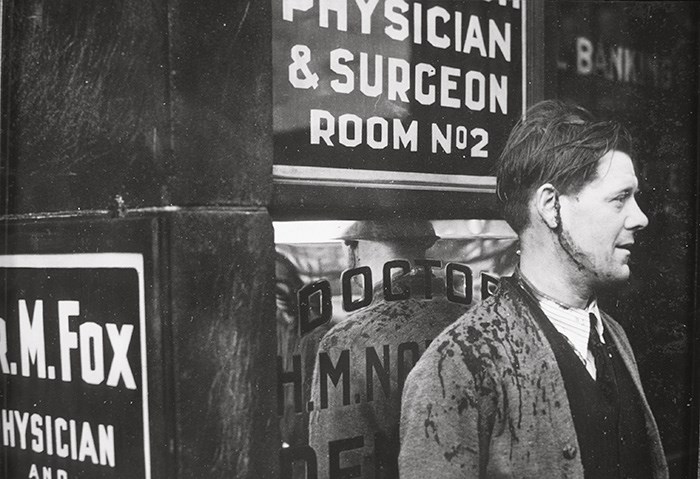 Photo credit: Province.
Photo credit: Province.
Steve Brodie, the leader of the relief camp workers occupying the Post Office, was injured when the RCMP used tear gas and billy clubs to evict the men on June 19, 1938, bringing the thirty-day occupation to an end.
People’s Parade, 1942
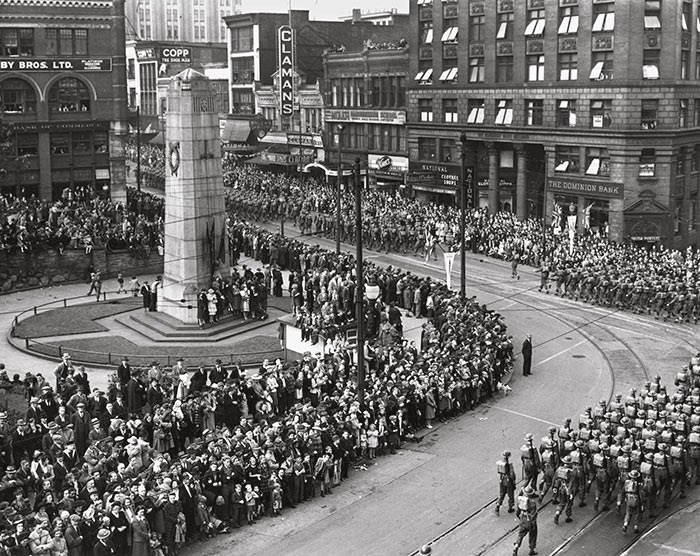 Photo credit: Vancouver Sun.
Photo credit: Vancouver Sun.
A People’s Parade on October 18, 1942 was attended by around 120,000 people, one-quarter of Vancouver’s citizens, along a three-mile route. The Vancouver Sun wrote that the city had never “witnessed such an impressive display of united effort aimed at a single goal—no price too high for victory” in the Second World War.
Residential School Protest, 1968
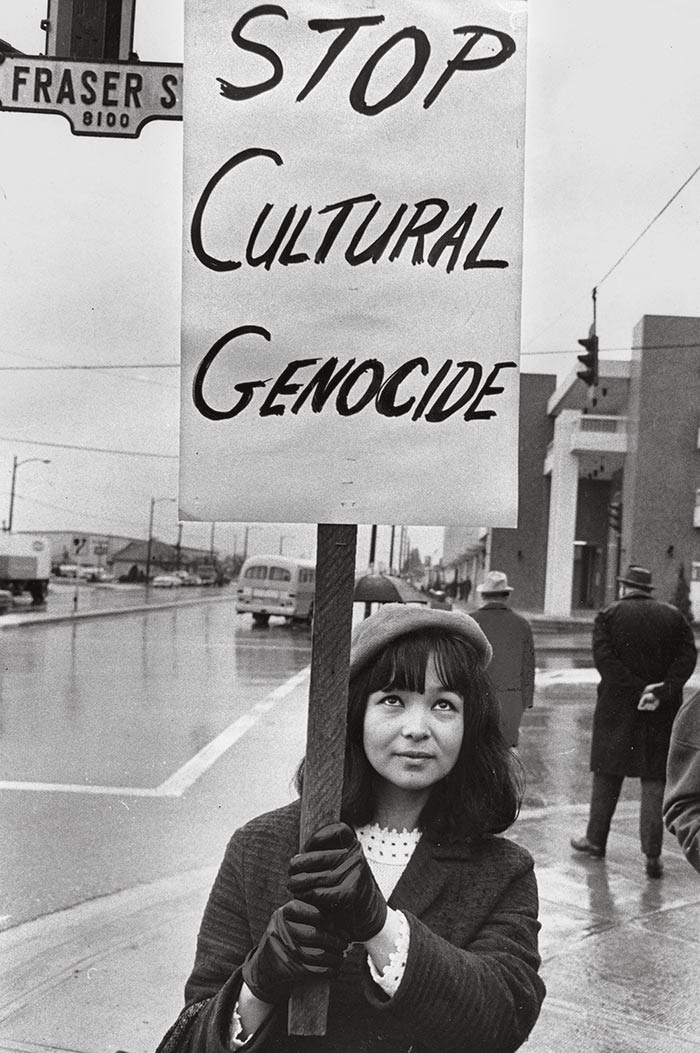 Photo credit: Ralph Bower/Vancouver Sun.
Photo credit: Ralph Bower/Vancouver Sun.
Geraldine Larkin, 20, of the Native Alliance for Red Power, picketed a meeting of the National Association of Principals and Administrators of Indian Residences at the Blue Boy Motor Hotel on March 12, 1968, to protest the effect of residential schools on First Nations culture.
Housing and Urban Development Report Protest, 1969
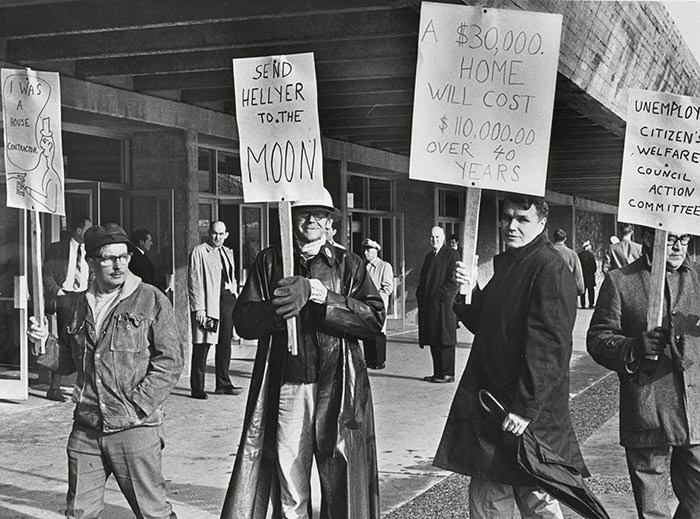 Photo credit: George Diack/Vancouver Sun.
Photo credit: George Diack/Vancouver Sun.
A February 1969 demonstration at the Agrodome protested federal minister Paul Hellyer’s controversial report on housing and urban development, which called for greater flexibility in Canada’s mortgage loan system and the suspension of the “wholesale destruction of older housing.”
Rolling Stones Riot, 1972
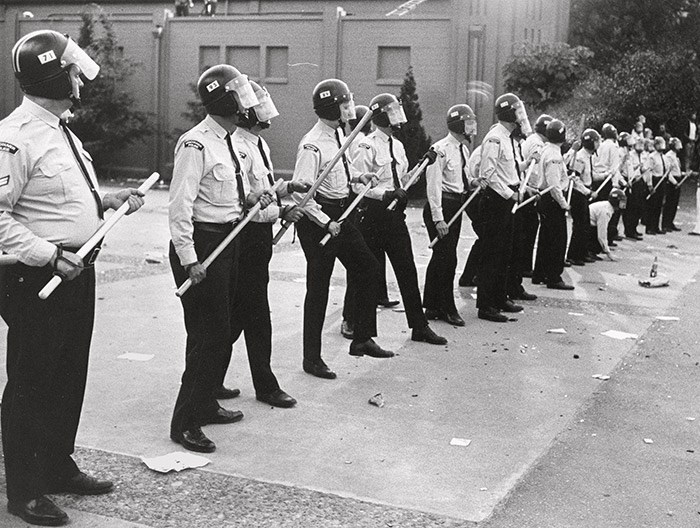 Photo credit: Dan Scott/Vancouver Sun.
Photo credit: Dan Scott/Vancouver Sun.
During the Rolling Stones concert at the Pacific Coliseum on June 3, 1972, 285 police clashed with 2,000 would-be concert goers, including members of the notorious Clark Park gang, some of whom threw rocks, bottles, and Molotov cocktails. Twenty-two people were arrested and thirty-one police officers injured.
Student Walkout, 1985
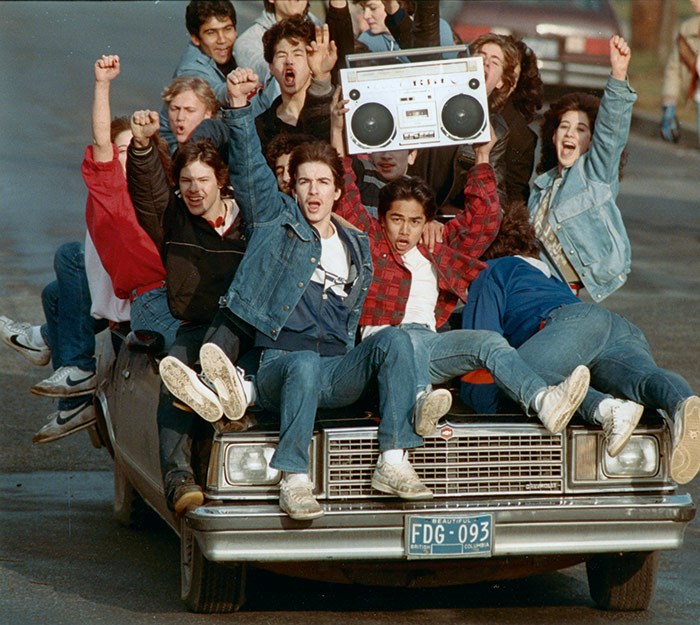 Photo credit: John Denniston/Province.
Photo credit: John Denniston/Province.
Students shouting “Walkout!” swarmed out of six Vancouver secondary schools on January 24, 1985, to protest education cutbacks.
Tiananmen Square Memorial, 1989
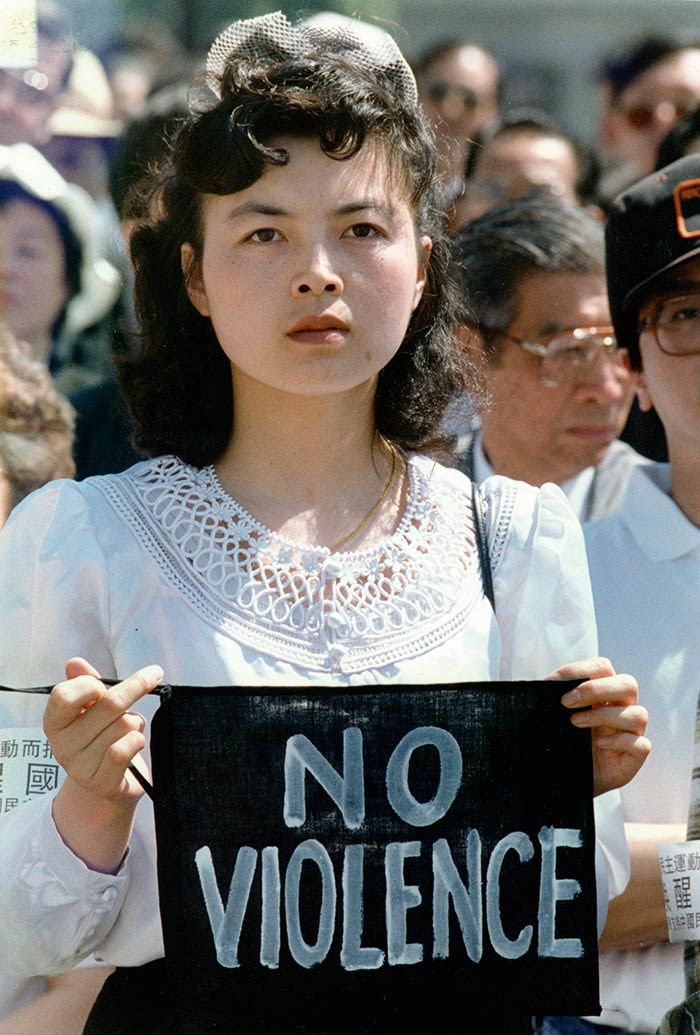 Photo credit: Peter Battistoni/Vancouver Sun.
Photo credit: Peter Battistoni/Vancouver Sun.
A woman protested at a memorial service on June 11, 1989, to honour the several hundred pro-democracy student protesters killed at Tiananmen Square on June 4.
Clayoquot Sound Logging Protest, 1993
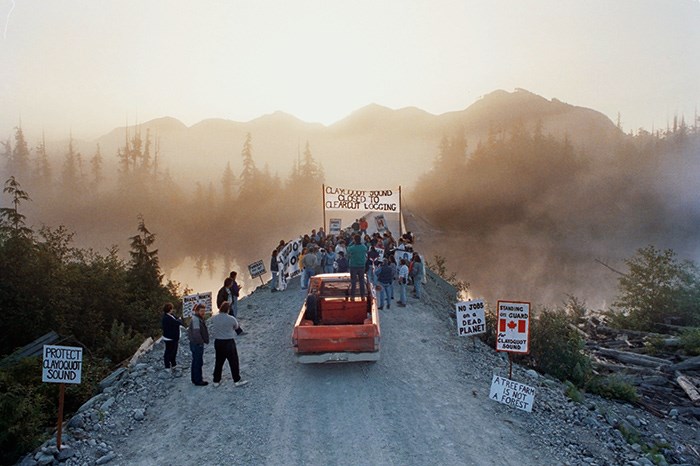 Photo credit: Mark van Manen/Vancouver Sun.
Photo credit: Mark van Manen/Vancouver Sun.
Clayoquot Sound logging protesters gathered at daybreak on July 7, 1993, at the Kennedy River Bridge in preparation for another day of confrontations with loggers and RCMP enforcing a Supreme Court injunction.
Idle No More, 2013
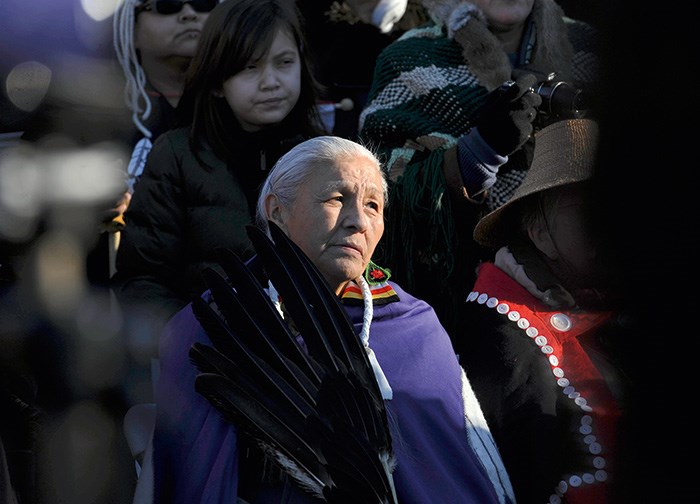 Photo credit: Jason Payne/PNG.
Photo credit: Jason Payne/PNG.
Idle No More protesters converged on Vancouver City Hall on January 11, 2013, as part of a national day of protest to coincide with a meeting between First Nations leaders and Prime Minister Stephen Harper in Ottawa.


